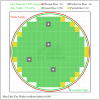I don't think AMD can charge a premium over Nvidia even if AMD is substantially faster. The problem is people just don't buy AMD GPUs. There is a mental block/mindshare issue that simply STOPS many people from buying AMD cards. They just won't do it. I still see their cards as the second choice. They are the "good enough" brand if you just need faster graphics for some computer you don't really care about and don't mind if half the programs you run don't even work right. The 6800XT looked good on paper and raw performance was good, but it's still just a lackluster AMD card.
If AMD releases a card at the same price as Nvidia but AMD was 20% faster, I'd still buy Nvidia. Why? Because the Nvidia card will work where the AMD card probably won't. Also, I still have a Gsync monitor which I won't replace, so Nvidia's Gsync brand trap actually worked in that regard. Honestly, what are the chances that an AMD card works like it should for a PC VR setup? I'd give it about a 40% chance whereas I already know the Nvidia cards work great. If all I did was play flat games and not care about Gsync, then maybe I'd consider the faster AMD card. Even then, man I just don't trust the AMD cards. Mental blocks are hard to break through. The first AMD CPU I considered buying was the 5800X and I didn't only because it was out of stock and too expensive anyway. It took all of those Ryzen releases before I finally considered their latest and best to be free enough of compromises that I'd like to have one. I did buy a couple R5 2600's for my kids because they were cheap and good enough for fortnite.





